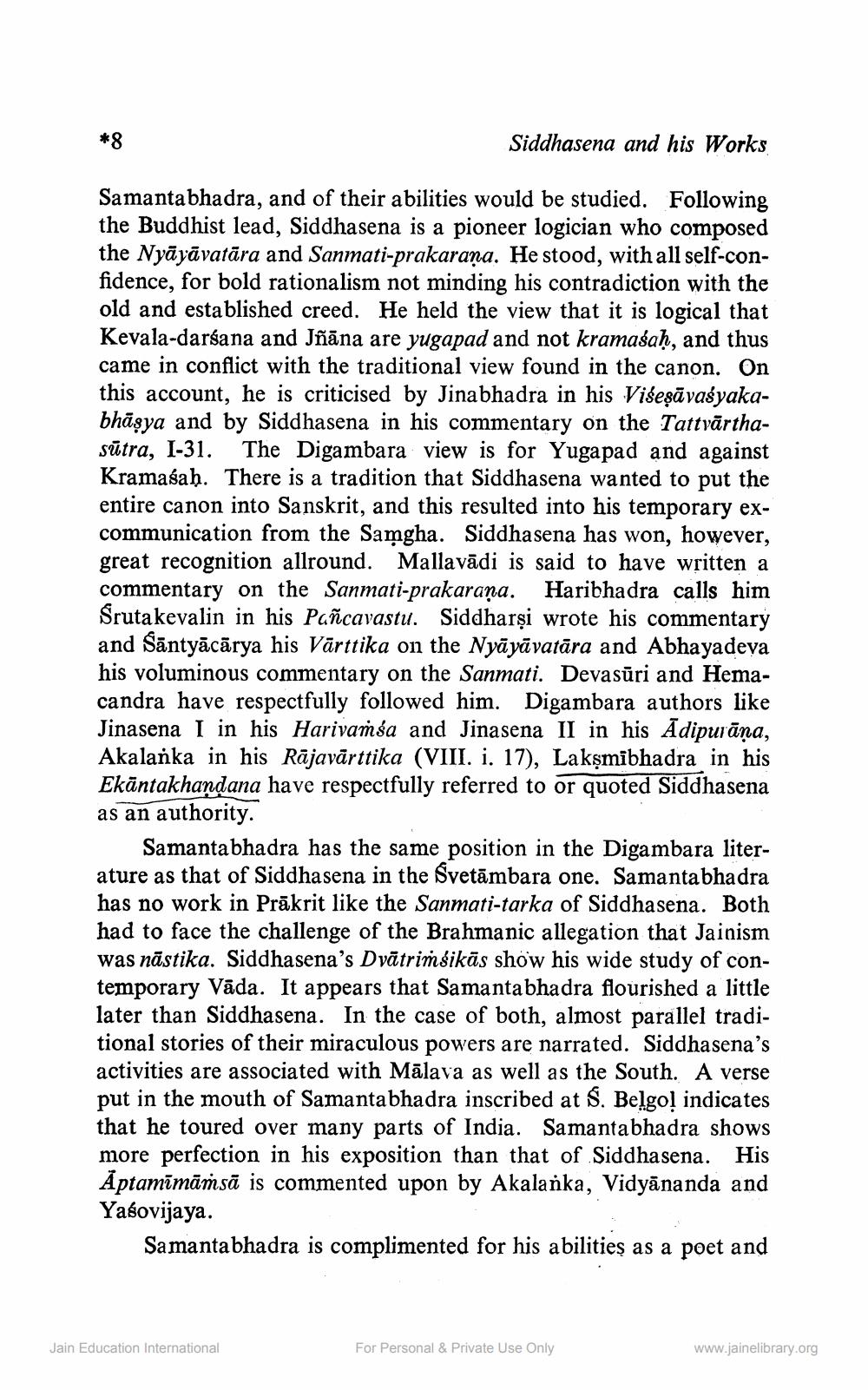________________
Siddhasena and his Works
Samantabhadra, and of their abilities would be studied. Following the Buddhist lead, Siddhasena is a pioneer logician who composed the Nyāyāvatāra and Sanmati-prakaraña. He stood, with all self-confidence, for bold rationalism not minding his contradiction with the old and established creed. He held the view that it is logical that Kevala-darśana and Jñāna are yugapad and not kramasaḥ, and thus came in conflict with the traditional view found in the canon. On this account, he is criticised by Jinabhadra in his Viseşāvasyakabhāsya and by Siddhasena in his commentary on the TattvārthaSūtra, I-31. The Digambara view is for Yuga pad and against Kramasah. There is a tradition that Siddhasena wanted to put the entire canon into Sanskrit, and this resulted into his temporary excommunication from the Samgha. Siddhasena has won, however, great recognition allround. Mallavādi is said to have written a
mentary on the Sanmati-prakarana. Haribhadra calls him Srutakevalin in his Pañcavastu. Siddharsi wrote his comme and Säntyācārya his Vārttika on the Nyāyāvatāra and Abhayadeva his voluminous commentary on the Sanmati. Devasūri and Hemacandra have respectfully followed him. Digambara authors like Jinasena I in his Harivamsa and Jinasena II in his Ādipurāņa, Akalanka in his Rājavārttika (VIII. i. 17), Lakşmībhadra in his Ekāntakhandana have respectfully referred to or quoted Siddhasena as an authority.
Samantabhadra has the same position in the Digambara literature as that of Siddhasena in the Svetāmbara one. Samantabhadra has no work in Prākrit like the Sanmati-tarka of Siddhasena. Both had to face the challenge of the Brahmanic allegation that Jainism was nāstika. Siddhasena's Dvātrimsikās show his wide study of contemporary Vāda. It appears that Samantabhadra flourished a little later than Siddhasena. In the case of both, almost parallel traditional stories of their miraculous powers are narrated. Siddha sena's activities are associated with Mālava as well as the South. A verse put in the mouth of Samantabhadra inscribed at S. Belgol indicates that he toured over many parts of India. Samantabhadra shows more perfection in his exposition than that of Siddhasena. His Aptamīmāṁsā is commented upon by Akalanka, Vidyānanda and Yasovijaya.
Samantabhadra is complimented for his abilities as a poet and
Jain Education International
For Personal & Private Use Only
www.jainelibrary.org




